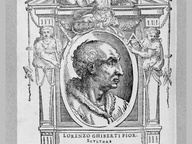Sportification. The Big Piano Smash

Philip Corner, Piano activities, 1962
Dal 24 October 2017 al 21 January 2018
Torino
Luogo: GAM – Galleria Civica d'Arte Moderna e Contemporanea
Indirizzo: via Magenta 31
Orari: Da martedì a domenica h.10.00-18.00 La biglietteria chiude un'ora prima. Chiuso lunedì
Costo del biglietto: Intero € 10, Ridotto € 8. Il primo martedì del mese, non festivo, l'ingresso è gratuito
Telefono per informazioni: +39 011 4429518
Sito ufficiale: http://www.gamtorino.it/
Il programma di esposizioni della VideotecaGAM dedicato alla storia del video d’artista negli anni Sessanta e Settanta prosegue indagando il particolare rapporto che lega l’inizio dell’utilizzo del mezzo video da parte degli artisti con la coeva cultura televisiva.
Sportification. The Big Piano Smash è una mostra dedicata ad alcuni aspetti della storia del programma televisivo Giochi Senza Frontiere, trasmesso in eurovisione dal 1965 al 1999. Forma utopica di sportificazione, cioè di formazione attraverso ludi comunitari, di una identità europea tutta da plasmare, il programma, preceduto da alcuni esempi nazionali come Campanile sera, si sviluppò in senso europeo a sette anni dalla fondazione della Comunità Economica Europea, del 1958, e accompagnò i primi anni di storia dell’Unione Europea, nata il 1 novembre del 1993. Giochi Senza Frontiere perseguiva l’ideale di una confederazione di cittadini, capaci di misurarsi, conoscersi e riconoscersi, in una rete transnazionale di città e paesi, in un’Europa fatta di piccole comunità sorelle, di un tessuto sociale più vasto e autentico della socialità tipica delle capitali e delle grandi città.
Da un vasto materiale raccolto in diversi archivi privati, si mettono in evidenza correlazioni inaspettate quanto insistite tra i diversi linguaggi utilizzati nella trasmissione e le coeve ricerche avanguardistiche. La trasmissione, nata in un periodo di ancora intensa sperimentazione televisiva, produsse una cospicua serie di scenografie, alcune rimaste come arredo urbano pubblico nelle cittadine che ospitarono i giochi, come nel caso dell’italiana Riccione. L’analisi mette in luce un intreccio di influenze che sono eredità, da un lato dell’architettura modernista, e dall’altro dei linguaggi e giochi di ascendenze Dada, del Situazionismo e di Fluxus.
Se è certo che la prima decade della storia del video d’artista sia legata a doppio filo con la neonata cultura televisiva e si sviluppi, in prima battuta, come reazione critica all’industria dell’intrattenimento proposta dalle diverse emittenti nazionali, è sorprendente registrare coincidenze e affinità come quella tra la prova The Big Piano Smash, dove le squadre di concorrenti di Giochi Senza Frontiere dovevano distruggere con delle mazze nel più breve tempo possibile un pianoforte, e la diffusa antiretorica del piano che il movimento Fluxus espresse attraverso artisti come Philip Corner, Nam June Paik, Ben Vautier, Wolf Vostell, George Maciunas successivamente ripresa da Beuys, Uecker, Montañez Ortiz e altri ancora.
L’esposizione si articola in quattro micro-sezioni: Giochi senza Frontiere, Eurovisioni, Fluxus e Situazionismo, Playground in dialogo con la proiezione del video The Big Piano Smash, famosa puntata inglese dei Jeux Sans Frontieres svolta a Blackpool nel 1967.
La mostra è stata resa possibile dalla collaborazione con Philip Corner, tra i primi distruttori del piano negli happening fluxus, Gunnar Schmidt, critico e storico dell’arte, esperto di Piano activities e Gianni Magrin, collezionista e curatore di un vasto archivio di immagini “assonanti”, memoriabilia ed ephemera dei popolari Giochi televisivi senza frontiere.
La mostra Sportification. The Big Piano Smash sarà introdotta da una conferenza il 24 ottobre alle ore 18,30 presso la Sala 1 della GAM nella quale interverrà, accanto agli autori di Sportification, Philip Corner, artista Fluxus. In quella occasione sarà presentato il libro Sportification. Eurovisions Performativity and Playgrounds, 1965-99, Viaindustriae publishing, Foligno / Colli publishing platform, Roma, 2017.
SCARICA IL COMUNICATO IN PDF
COMMENTI

-
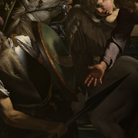 Dal 24 July 2025 al 30 September 2025
Roma | Gallerie Nazionali di Arte Antica - Palazzo Barberini
Dal 24 July 2025 al 30 September 2025
Roma | Gallerie Nazionali di Arte Antica - Palazzo Barberini
La Conversione di Saulo di Caravaggio
-
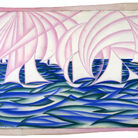 Dal 27 September 2025 al 22 February 2026
Pistoia | Palazzo de' Rossi
Dal 27 September 2025 al 22 February 2026
Pistoia | Palazzo de' Rossi
In visita | Giacomo Balla
-
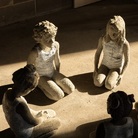 Dal 22 July 2025 al 2 November 2025
Milano | Palazzo Reale
Dal 22 July 2025 al 2 November 2025
Milano | Palazzo Reale
Valerio Berruti. More than kids
-
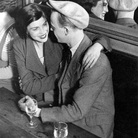 Dal 19 July 2025 al 9 November 2025
Aosta | Centro Saint-Bénin
Dal 19 July 2025 al 9 November 2025
Aosta | Centro Saint-Bénin
Brassaï. L’occhio di Parigi
-
 Dal 17 July 2025 al 2 November 2025
Cortona | Sedi varie
Dal 17 July 2025 al 2 November 2025
Cortona | Sedi varie
Cortona On The Move 2025 - Come Together
-
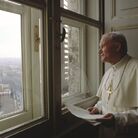 Dal 17 July 2025 al 30 November 2025
Roma | Museo Nazionale di Castel Sant’Angelo
Dal 17 July 2025 al 30 November 2025
Roma | Museo Nazionale di Castel Sant’Angelo
Giovanni Paolo II, l'uomo, il Papa, il Santo negli scatti di Gianni Giansanti
